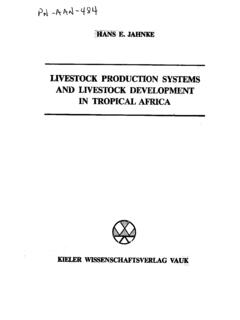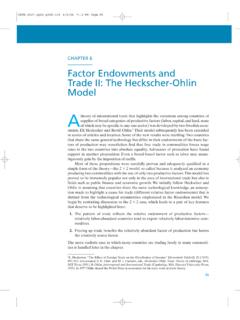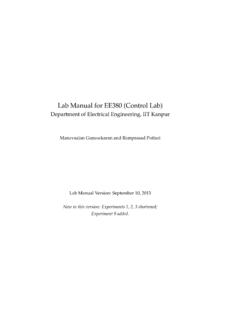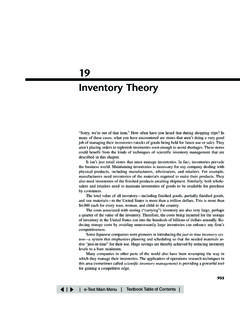Transcription of Language Structure and Use - pearsoncmg.com
1 Language Structure and UseAh, Language !Verbal Language is unique to human beings. It allows us to express our deepest feel-ings, our broadest concepts, our highest ideals. It takes us beyond the here and now, and even beyond the possible by means of Language , we might join the attackers at the siege of Troy or journey through the looking glass with Alice. Language can connect humans as children listen to stories before the fireplace on a cold winter night; or it can, together with culture, divide two peoples into bitter sectarian war-fare. Language communicates the heights of joy and the depths of equalizes preschoolers as well as professors can be considered native speakers of their first Language .
2 Alternatively, Language reflects inequality dialect distinctions often demarcate social class. Almost all aspects of a person s life are touched by Language . Although Language is universal, each Language has evolved to meet the experiences, needs, and desires of a particular Language Structure and use provides teachers with essential tools to help students learn. All languages share universal features, such as the abil-ity to label objects and to describe actions and events. All languages are divided into various subsystems (phonology, morphology, syntax, semantics, and prag-matics). What is most amazing is that Language users learn all these subsystems of their first Language without realizing it native speakers are not necessarily able to explain a sound pattern, a grammatical point, or the use of idiomatic expression.
3 To them, that is just the way it is. Language , then, is a system that works even without conscious awareness, an inborn competence that unfolds and matures when given adequate stimulation from chapter explores the various aspects of Language and provides sugges-tions to help English- Language development (ELD) teachers identify student needs and provide appropriate instruction. Knowledge about Language Structure and use also helps teachers recognize the richness and variety of students skills in both first and second languages. Linguistic knowledge not only about English but also 113 14 Part One Teaching English to English Learnersabout the possibilities inherent in other languages helps teachers view the Language world of the English learner with insight and UniversalsAt last count, 6,912 languages are spoken in today s world (SIL International, 2000).
4 Although not all of these have been intensely studied, linguists have carried out enough investigations over the centuries to posit some universal facts about Languages Have StructureAll human languages use a finite set of sounds (or gestures) that are combined to form mean-ingful elements or words, which themselves form an infinite set of possible sentences. Every spoken Language also divides these discrete sound segments phonemes such as /t/, /m/, or /e/ into a class of vowels and a class of grammars contain rules for the formation of words, and sentences of definite types, kind, and similar grammatical categories (for example, nouns and verbs) are found in all lan-guages. Every Language has a way of referring to past time; the ability to negate; and ways to form questions, issue commands, and so human languages are specific to their places of use and origin (for example, languages of seafaring cultures have more specific words for oceanic phenomena than do lan-guages of desert tribes), semantic universals, such as male or female, are found in every Language in the world.
5 No matter how exotic a Language may appear to a native English speaker, all human languages in fact share the same features, most of which are lacking in the Language of apes, dolphins, or Is DynamicLanguages change over time. Pronunciation (phonology) changes across 400 years, for exam-ple, Shakespeare s plays often feature scene-ending couplets whose words may have rhymed in his day but do not in modern translations. We recognize that pronunciation in English has altered over time, because the spelling of some words is archaic: We no longer pronounce the /k/ in knight or the /w/ in write. Semantics change over time, and words disappear, such as the archaic English words bilbo, costermonger, fluey, and shew.
6 Words expand their meanings, as with geek and mouse. New words appear, such as nannycam and freeware. Some languages change more than others: Written Icelandic has changed relatively little since the thirteenth century, whereas writers for Wired, a New York based technology magazine, coin an average of thirty new words in English with each month s who respect the dynamic nature of Language can take delight in learn-ers approximations of English. When Chinese speakers fail to produce past-tense markers ( *Yesterday I download a file),1 they may be speaking the English of the future, when the past-1An asterisk (*) before a word or a sentence indicates that it is phonetically or grammatically incorrect.
7 Chapter One Language Structure and Use 15tense morpheme (-d, -ed, -t) may be dropped, just as the second-person inflection (-est, as in thou goest ) has Is ComplexWithout question, using Language is one of the most complex of human activities, providing the human race with a psychological tool unmatched in power and flexibility. It is normal for humans no matter their native Language to be able to communicate a wide range of con-cepts, both concrete and abstract. All languages are equally complex, capable of expressing a wide range of ideas and expandable to include new words for new concepts. Motu, one of 715 indigenous languages in Papua New Guinea, has a complex vocabulary for indigenous plants, whereas Icelandic has an elaborate system of kinship names that allows people to trace their ancestry for hundreds of is arbitrary, meaning that we cannot guess the meaning of a word from its sound (except for a few words such as buzz) there is no inherent reason to link the sound and meaning of a word.
8 Because the meaning symbol connection is arbitrary, lan-guage gains an abstracting power removed from direct ties to the here and now of objects or events. Moreover, Language is open-ended an infinite set of sentences can be produced in any though Language is complicated, every healthy child regardless of racial, geo-graphical, social, or economic heritage is capable of learning any Language to which he or she is exposed. By the age of five, most children have learned how to make well-formed sentences in their native Language and are thus considered native speakers. Although some students may be shy or their Language skills delayed in development, it is incorrect to say that a young child doesn t have Language .
9 DID YOU KNOW?THE KOREAN LANGUAGEK orean is the only Language to have a true alphabet completely native to East Asia, with each character corresponding to a phoneme (10 vowels, 19 consonants, and vowel-like conso-nants called glides). Korean has no articles, word gender, or declensions. There are no adjec-tives; instead, verbs can be used as adjectives. There are also extensive variations of verb forms used to indicate tenses and from Herrera, P rez, & Escamilla, 2010, pp. 94 : The Sound Patterns of LanguagePhonology is the study of the sound system of a Language . Phonetics is the science of the pro-duction, reception, analysis, transcription, and classification of speech sounds, and also, the relation of speech sounds to the total Language process (Heilman, 2002, p.)
10 4). 16 Part One Teaching English to English LearnersDID YOU KNOWIS IT ENGLISH?These activities illustrate the characteristics of the English sound system:Which of the following are possible English words and which would be impossible because they do not fit the English sound system? stgmonic, chetelogo, ndele, tassitic(Answer: not stgmonic and ndele they contain non-English-like consonant clusters)Products are often brought to the market with names that use phonemic enhance- ment: The gasoline company and product Esso was renamed Exxon in 1973 in part because test marketing showed that people responded more strongly to the look and sound of the double X than the double are the individual sounds in a Language , the distinctive units that make a differ-ence when sounds distinguish words.
















